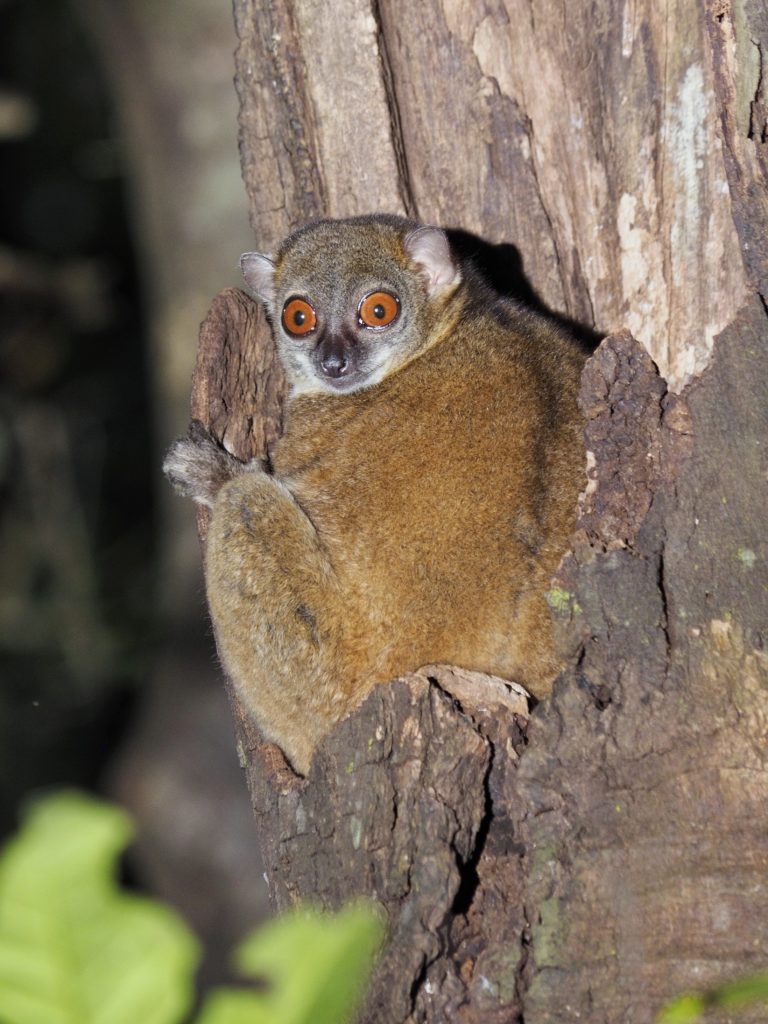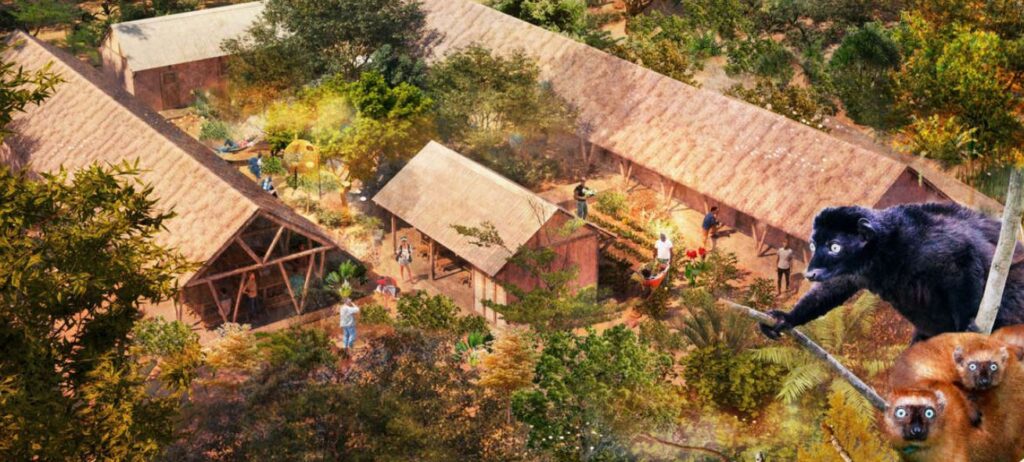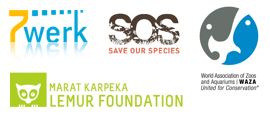Ankarafa Research Camp
Research is vital to the work of the AEECL and we have welcomed many researchers to our Ankarafa Research Station since its inception in 2004.
Research is primarily focussed on lemur species, such as the blue-eyed black lemur (Eulemur flavifrons), the Sahamalaza sportive lemur (Lepilemur sahamalazensis) and the Northern giant mouse lemur (Mirza zaza), as well as the Madagascar sacred ibis, (Threskiornis bernieri). However, the project also includes other taxa, such as invertebrates and herpetofauna.


Each year, students and researchers conduct vital studies on these species in an effort to better understand their behaviour and ecology. This enables us to work with local NGOs and the Malagasy government to create informed conservation management plans for these species and the region.
The current Ankarafa field camp is basic with a few buildings, a collection of tent shelters for researchers, and an open-air kitchen with a covered eating area.
The new field station will provide an internationally recognised research base and high-quality environment for students and researchers. It will also increase opportunities for local people whilst connecting and inspiring audiences in the UK and around the world.
The renowned Ankarafa field station will:
- Become a permanent research facility at Sahamalaza; building capacity by training field assistants and researchers, and providing long-term, local job opportunities.
- Facilitate more students and researchers (both international and Malagasy) to conduct research and utilise the camp and the data collected by trained local field researchers. Each international student also funds a Malagasy post-graduate student to work alongside them.
- Support a strategy to increase sustainable tourism, providing livelihoods and income for the area.
- Provide a valuable education resource for local children and communities.
- Showcase the unique forest environment, local culture and Critically Endangered species and the associated research work to a wider audience around the world.
- Encourage habitat restoration to extend and potentially link up the fragments of remaining forest.

It is an exciting phase in the evolution of the AEECL and will enable the continuation of our vital research, conservation management and community collaboration.

